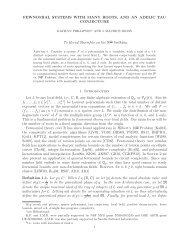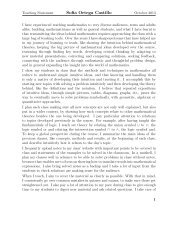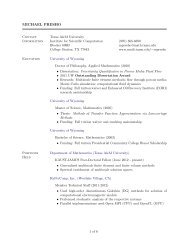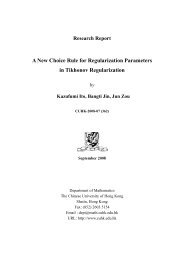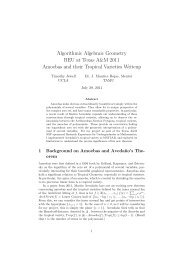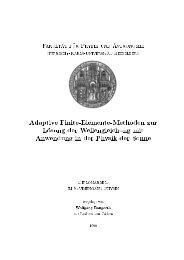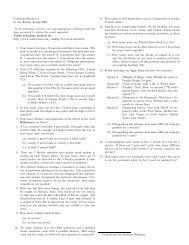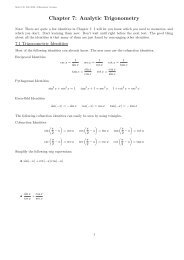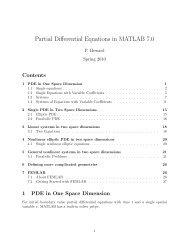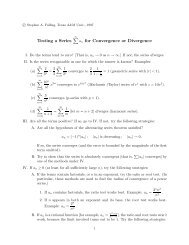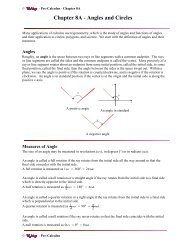Tensors: Geometry and Applications J.M. Landsberg - Texas A&M ...
Tensors: Geometry and Applications J.M. Landsberg - Texas A&M ...
Tensors: Geometry and Applications J.M. Landsberg - Texas A&M ...
You also want an ePaper? Increase the reach of your titles
YUMPU automatically turns print PDFs into web optimized ePapers that Google loves.
0.3. Clash of cultures xvii<br />
theorem that the ideals of homogeneous varieties are generated in degree<br />
two, the statement of the Bott-Borel-Weil theorem, <strong>and</strong> the presentation of<br />
the inheritance principle of Chapter 6 in a more general context.<br />
This chapter is intended for someone who has already had a first course<br />
in representation theory.<br />
Chapter 17: Weyman’s method. The study of secant varieties of triple<br />
Segre products naturally leads to the Kempf-Weyman method for determining<br />
ideals <strong>and</strong> singularities of G-varieties. This chapter contains an exposition<br />
of the rudiments of the method, intended primarily to serve as an<br />
introduction to the book [328].<br />
The prerequisites for this chapter include Chapter 16 <strong>and</strong> a first course<br />
in algebraic geometry.<br />
0.3. Clash of cultures<br />
In the course of preparing this book I have been fortunate to have had<br />
many discussions with computer scientists, applied mathematicians, engineers,<br />
physicists, <strong>and</strong> chemists. Often the beginnings of these conversations<br />
were very stressful to all involved. I have kept these difficulties in mind, attempting<br />
to write both to geometers <strong>and</strong> researchers in these various areas.<br />
Tensor practitioners want practical results. To quote Rasmus Bro (personal<br />
communication): “Practical means that a user of a given chemical<br />
instrument in a hospital lab can push a button <strong>and</strong> right after get a result.”<br />
My goal is to initiate enough communication between geometers <strong>and</strong> scientists<br />
so that such practical results will be realized. While both groups are<br />
interested in such communication, there are language <strong>and</strong> even philosophical<br />
barriers to be overcome. The purpose of this paragraph is to alert geometers<br />
<strong>and</strong> scientists to some of the potential difficulties in communication.<br />
To quote G. Foll<strong>and</strong> [123] “For them [scientists], mathematics is the<br />
discipline of manipulating symbols according to certain sophisticated rules,<br />
<strong>and</strong> the external reality to which those symbols refer lies not in an abstract<br />
universe of sets but in the real-world phenomena that they are studying.”<br />
But mathematicians, as Foll<strong>and</strong> observed, are Platonists, we think the<br />
things we are manipulating on paper have a higher existence. To quote<br />
Plato [262]: “Let us take any common instance; there are beds <strong>and</strong> tables in<br />
the world –plenty of them, are there not?<br />
Yes. But there are only two ideas or forms of them –one the idea of a<br />
bed, the other of a table.<br />
True. And the maker of either of them makes a bed or he makes a table<br />
for our use, in accordance with the idea –that is our way of speaking in



